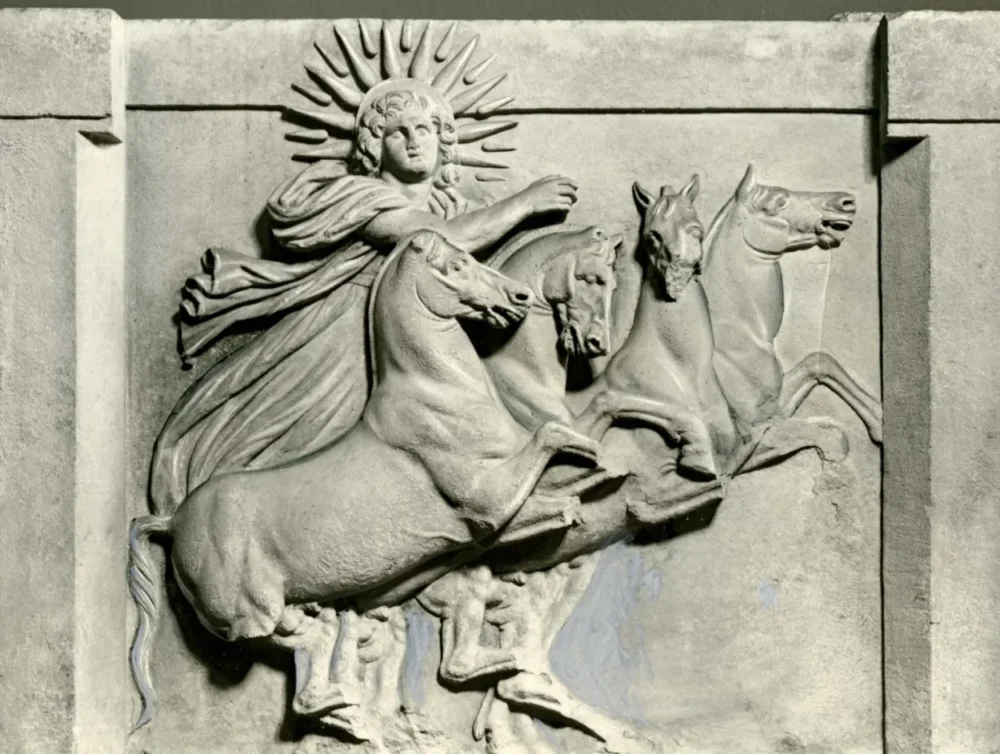Summer Symbolism in Cultures and Arts Around The World
There’s something inherently magical about summer—an ineffable sense of nostalgia, freedom, and boundless joy that only the season of sunlight and warmth can inspire. From the fiery orange summer sunsets that have inspired countless works of art to the cultural rituals celebrating the season of growth and abundance, summer is more than just a time on the calendar—it’s a symbol of life, vitality, and transformation. This article is your passport to the world of summer symbolism in arts, cultures, and beliefs around the world. Ready to explore the plethora of meanings and symbols summer holds? Let’s dive in!
1. Growth
In nature, growth is often associated with the summer season as it is a time of warmth, sunshine, and longer days. During this time, plants and crops flourish, animals mate and reproduce. It is such an active time, and everything becomes so vibrant. This is why summer is often seen as a symbol of abundance and prosperity.

There are many interesting natural phenomena associated with growth that happen during the summer. For example, in ancient Egypt, the annual flooding of the Nile River during the summer months brought nutrient-rich silt to the surrounding fields, creating fertile soil that facilitated bountiful harvests. This natural cycle of flooding and receding waters was vital for the growth of crops, ensuring the sustenance and growth of the Egyptian civilization.
Not just Egypt, but many agricultural societies across the world also recognized the importance of summer for their livelihoods. The warmer temperatures and increased sunlight provided optimal conditions for the growth of crops like wheat, barley, and various fruits. This abundance of food during the summer months allowed these societies to thrive and expand, as surplus harvests could support larger populations and encourage the development of trade and culture.
Read More: Symbols of Growth Around The World
2. Joy
Throughout history and across cultures, summer has been a time of celebration and happiness.
For example, held in Buñol, Spain, La Tomatina is a unique festival involves a massive tomato fight where participants throw tomatoes at each other. Its origin is believed to trace back to a spontaneous food fight between young people in 1945.
On the day of La Tomatina, the town’s streets are lined with plastic sheets to protect buildings and shops. A large quantity of overripe tomatoes is brought in for the event. The tomato fight begins when a ham is placed on a greased pole, and participants aim to climb the pole and retrieve the ham, signaling the start of the tomato-throwing frenzy.

Once the signal is given, the streets transform into a chaotic and vibrant scene as participants pelt each other with tomatoes. Trucks loaded with tomatoes drive through the streets, providing ammunition for the participants. The tomato fight lasts for about an hour, and by the end of it, the participants and the town itself are covered in tomato pulp.
There are, of course, many other festivals held in the summer for religious purposes too. Inti Raymi is an ancient Incan festival that celebrates the sun god Inti, and to ensure a good harvest. In modern times, Inti Raymi is celebrated annually on June 24th, coinciding with the winter solstice in the Southern Hemisphere.
Inti Raymi is a way to connect with Incan heritage and culture. It showcases the reverence the Incas had for the sun, which was vital to their agricultural success. The festival also serves as an opportunity to educate both locals and visitors about the history and traditions of the Incan civilization.
Read More: Sun Symbolism and Meaning
3. Energy

During summer, the days are longer, and the sun shines brightly. The increased sunlight exposure is known to boost our mood and energy levels, as it stimulates the production of serotonin, a neurotransmitter linked to happiness.
Many energizing activities like hiking, swimming, and cycling are popular in summer. These activities engage the body and mind, releasing endorphins that contribute to increased energy and a sense of vitality. It is also a wonderful season of abundant fresh fruits and vegetables. These nutrient-rich foods provide essential vitamins and minerals that help sustain energy levels and overall well-being.
4. Freedom

For many, summer evokes memories of carefree childhood day. It holds a special place in any kid’s heart because summer means a break from school. We can have so much more free time and fewer obligations compared to the structured routines of the school year. Children can engage in leisurely activities, play with friends, explore their surroundings, and simply enjoy themselves without the pressures of homework or exams. If that is not freedom, I don’t know what is.
Read More: 25 Symbols of Freedom and Their Meaning
5. Abundance

After all, summer usually brings the perfect climate for nature to thrive. Increased sunlight during summer provides ample energy for plant growth and development. In other tropical regions, summer even brings sufficient rainfall and warm temperatures, supporting the absorption of nutrients from the soil, facilitating healthy crop development.
In fact, this phenomenon of abundant summer harvests has shaped cultural practices and traditions around the world. Many societies celebrate harvest festivals during this season to express gratitude for the abundance of food and to recognize the vital connection between human beings and the land that sustains them.
6. Exploration

Many people choose to travel during the summer months. The warm and pleasant weather of summer makes it an ideal time for outdoor exploration. Exploring new destinations, cultures, and landscapes brings a sense of adventure and discovery that other seasons just can’t seem to offer.
7. Nostalgia
Nostalgia is a sentimental longing affection for the past, and summer is the season of carefree memories. We were not bound by any responsibilities, and it felt like we can do anything we want during this time. Summer is a way for us to reconnect with a “better time” where we feel so peaceful and happy and innocent.
Many coming-of-age stories are set in the summertime, since this season is often associated with pivotal moments of growth, self-discovery, and transformation. Summer vacations provide opportunities for characters to form deep connections with peers. These friendships, often intense and transformative, contribute to their emotional growth and understanding of human relationships.

8. Heat and Dryness
Summer is usually the hottest season in the year. During summer, the Sun is positioned more directly overhead in the hemisphere experiencing the season. This means that the same amount of sunlight is spread over a smaller surface area, intensifying the heat.

This summer symbolism finds itself Writers and artists use vivid descriptions to capture the intensity of summer heat. Words like “sweltering,” “scorching,” and “blistering” convey a sense of the oppressive warmth that can be felt during the season. In literature, the “summer” imagery is commonly used to represent “heat-related” emotions such as passion, desire, and intensity, as well as anger and frustration. Characters’ actions and emotions mirror the heat of the season.
9. Creativity

During summer, the natural world bursts with color, life, and inspiration. Blooming flowers, lush landscapes, and vibrant sunsets provide a visually stimulating backdrop that can spark creative ideas. That’s not to mention that the laid-back vibe of summer can create a relaxed mindset, which leads to creative thinking.
Interestingly, Leo is associated with the summer season, as it falls between July 23 and August 22. Leo is ruled by the Sun and is often linked with traits such as confidence, self-expression, and creativity. Leo is a fire sign, symbolizing passion and enthusiasm, and its fiery energy is so “summer-like”. During the summer, when the Leo energy is prominent, people may feel a stronger desire to express themselves creatively.
10. Romance

Beaches, parks, gardens, and other outdoor venues become popular locations for romantic dates and gatherings. The beauty of nature adds to the romantic ambiance. Then, the light-heartedness of summer encourages more social interactions, including flirting and playful banter, which can often lead to romantic relationships.
You can see how popular culture often associates summer with romantic themes, influencing people’s perceptions and expectations of the season.
Summer Symbolism in Greek Mythology

The summer symbolism appears in Greek mythology as the Sun God with qualities related to joy and happiness. Apollo is one of the most important and multifaceted deities in Greek mythology. He is the son of Zeus, the king of the gods, and Leto, a Titaness. Apollo’s domains include the arts, music, poetry, prophecy, healing, and the Sun. He is often depicted as a youthful and handsome god, radiating charisma and vitality.
Another Sun God is Helios. He is the personification of the Sun, and his name is literally “the Sun” in the Greek language. He is often considered a primordial deity, the offspring of the Titans Hyperion and Theia. Helios is closely associated with the daily rising and setting of the Sun and the warmth and light it provides to the world.
Summer Symbolism in Ancient Egyptian Mythology
Ra was one of the most important deities in the Egyptian pantheon, representing the Sun’s life-giving and sustaining energy. As the Sun God, Ra was believed to travel across the sky during the day, bringing light, warmth, and vitality to the world. His journey from sunrise to sunset was often depicted as a divine boat voyage across the celestial waters, symbolizing his continuous presence and influence.
The intense heat of summer in the Egyptian climate resonated with Ra’s role as the Sun God. The scorching rays of the sun were seen as manifestations of Ra’s fiery power, and his association with the hottest season aligned with his role as a source of life-giving energy. The heat of summer also contributed to the idea of Ra’s strength and dominance over the natural world.

Summer Symbolism in Japanese Cultures
In Japan, the summer season holds a special connection to ancestral spirits, and this relationship is commemorated through the Obon Festival, also known as Bon Festival. This traditional event is deeply rooted in Buddhist and Shinto beliefs and is observed to honor and remember deceased ancestors. The Obon Festival typically takes place in July or August, varying by region.
The Obon Festival is a time when it’s believed that the spirits of departed ancestors return to the realm of the living to visit their families. This notion is based on the Buddhist concept of “Ullambana” or “Obon,” which signifies the period when the spirits are temporarily released from the cycle of rebirth and can interact with their descendants.
Items Associated With The Summer
- Sunscreen: Essential for protecting the skin from the strong summer sun.
- Swimsuits: Worn for swimming and enjoying water-related activities.
- Sunglasses: Provide eye protection from bright sunlight.
- Beach Towel: Used for lounging on the beach or by the pool.
- Picnic Basket: Perfect for outdoor picnics and gatherings.
- Ice Cream: A popular treat to cool down on hot days.
- Flip-Flops: Comfortable footwear for casual summer outings.
- Watermelon: A refreshing and juicy fruit often enjoyed in summer.
- BBQ Grill: Used for outdoor barbecues and cookouts.
- Frisbee: A fun outdoor game for friends and family.
- Hammock: Ideal for relaxing in the shade or by the water.
- Cooler: Keeps beverages and snacks chilled during outings.
- Bicycle: A great way to explore and enjoy the outdoors.
- Summer Hat: Offers shade and protection from the sun.
- Insect Repellent: Helps keep pesky bugs at bay during outdoor activities.
- Beach Ball: Used for various beach games and activities.
- Water Balloons: Fun for water fights and outdoor games.
- Outdoor Grill: Used for cooking meals in the open air.







